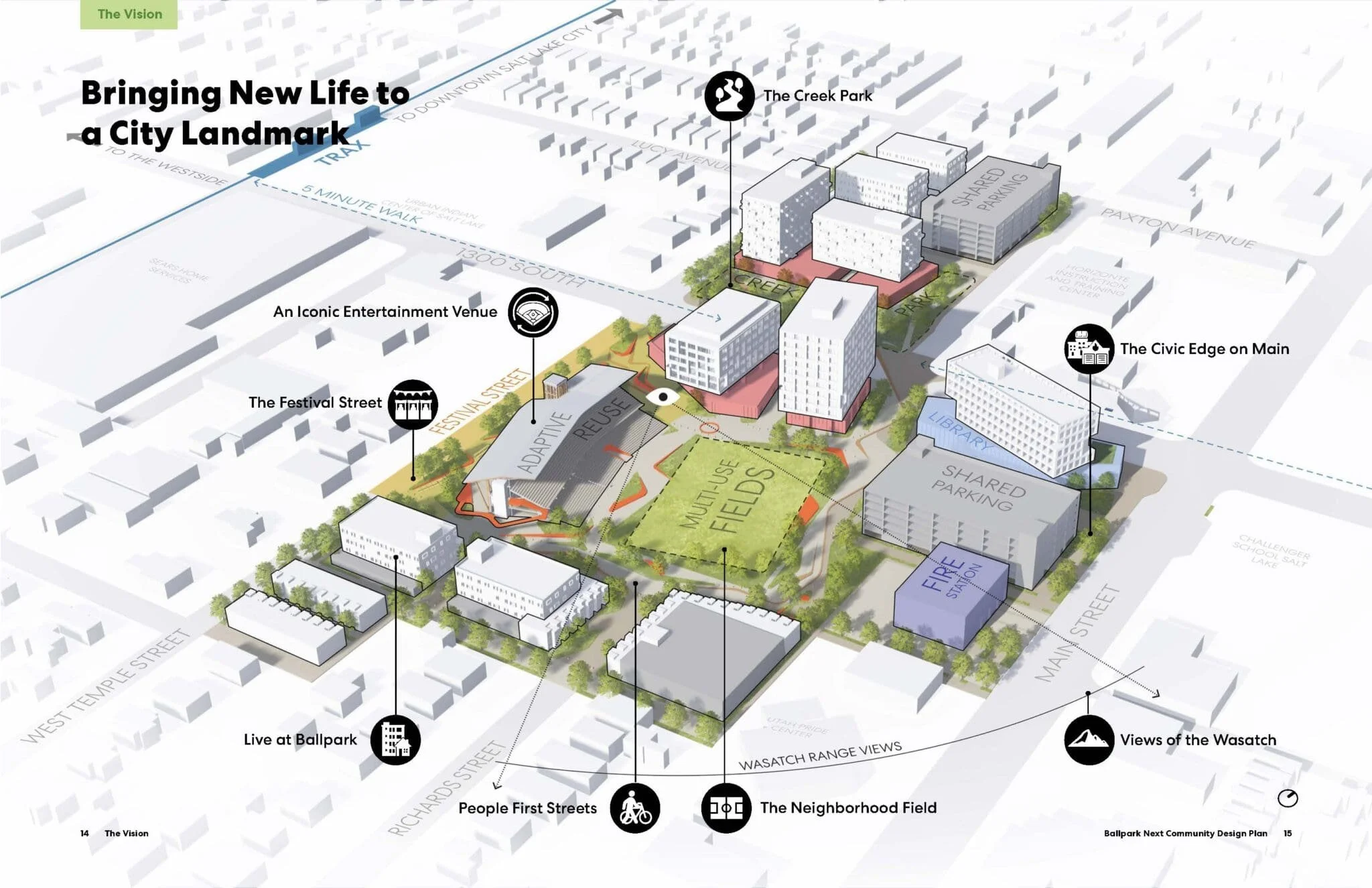SLC to purchase Allen Park; protect Emigration Creek
Authored by Brian Tonetti
Salt Lake City has purchase Allen Park for $7.5 million. The property features historic buildings, numerous works of art, and a stretch of Emigration Creek. Utah Open Lands is accepting donations for future restoration.
In 1931, the eccentric Dr. George A. Allen purchased a seven-acre farm along Emigration Creek. The physician and his wife Ruth, an artist, built a Scandinavian log home and established the property as a bird sanctuary.
They created pathways beside Emigration Creek, planted trees, built fountains and a swimming pool, created numerous mosaic and concrete artworks, and erected cages for Dr. Allen’s growing collection of exotic birds and other wildlife. Peacocks still roam the neighborhood to this day.
To supplement income, Dr. Allen trucked in old pioneer homes and put them up for rent. Sixteen buildings sit on the property, most notably a 1850s log home built by pioneer Thomas Boam. Eclectics moved in looking to escape the bustles of urban living.
In January 2019, tenants living in Allen Park, colloquially known as “Hobbitville,” were evicted. Buildings were crumbling and repair costs outweighed rental revenue. Amid concerns of a 60-unit development, residents and community organizations mobilized to protect the heritage of Allen Park and Emigration Creek.
The beloved Allen Park is saved! Salt Lake City announced it is under contract to purchase the property for $7.5 million. Mayor Erin Mendenhall said of the effort: “Allen Park is a rare opportunity to preserve almost seven acres of unique ecosystem in a historic area that would otherwise be developed by private entities.”
The Seven Canyons Trust, along with partners at the Tracy Aviary, Westminster College, and others, wrote letters of support for the City’s proposal. Further, we coordinated with the sellers to ensure all parties knew the importance of the property and Emigration Creek.
Our letter to the seller:
“The Allen Park property features one of the last remaining wild and untouched stretches of stream channel in Salt Lake City. A 1,200-foot stretch of Emigration Creek meanders its way among beautiful trees, historic homes, and creative works of art. Connected with Wasatch Hollow, Blaine Natural Area, and Westminster College, this property would create a 1.7-mile corridor of a nearly-contiguous, accessible, and preserved riparian ecosystem.
Restoration and preservation of Emigration Creek would provide a corridor and habitat for neotropical migratory birds, Utah’s wildlife, and our state fish, the Bonneville cutthroat trout. Increasing and preserving the dense tree canopy will provide shade, water temperature control, and air quality improvements. Through restoration of the creek’s floodplain, meanders, and banks, water velocity will slow and flooding mitigated. Along with native riparian plantings, water quality will improve through reduced erosion and retention and filtration of pollutants.
A series of low-impact trails can provide a means for the community to appreciate the creek, discover the many artworks, and learn about the legacy of Dr. George Allen and his family. The beauty of the creek juxtaposed against the historic homes and artworks would be preserved for all residents of Salt Lake City to escape the chaos of urban life.”
This is just the start
Now, the restoration work begins. The community group, Save Allen Park, partnered with Utah Open Lands to collect donations. According to Utah Open Lands, approximately $200,000 is needed for renovation of the property and restoration of Emigration Creek. Help us ensure future generations can enjoy Dr. Allen’s legacy and this beautiful natural oasis along Emigration Creek. Click here to support the campaign.
A huge thank you and congratulations to Salt Lake City, Save Allen Park, Utah Open Lands, and the many, many others involved in this ray of hope. Your calls are being heard and Allen Park is saved because of you.




